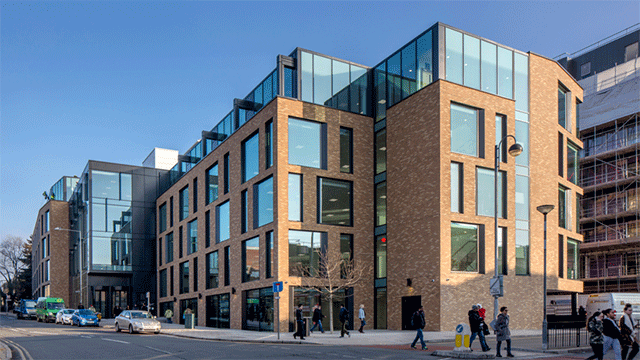COMMENT Although it is right to remain cautious and watchful for setbacks, there is a definite sense that we are entering a new phase of Covid recovery and a traditional “back to school” mood for many. For our children the school holidays are over and for many office workers 6 September marked the beginning of the “great office return” – at least for part of the week.
Businesses and their employees adapted quickly to remote working – the proportion of people working from home more than doubled last year according to the Office for National Statistics – and both have recognised the benefits. We relished not having to commute on the darkest and coldest of winter mornings and the time not spent commuting into our city centres has helped many with productivity and to better juggle work-life priorities.
Gathering pace
We have missed out on a lot though. Zoom and Teams just don’t cut it when trying to build relationships and foster a culture of collaboration. New employees have been inducted without having ever met their colleagues or visited their workplace. The soft learning and development that we possibly took for granted, that comes from being around more experienced colleagues, and listening to the office at work, has been closed to them.
And few have the luxury of a purpose-built office at home – living and working from the same bedroom, sofa or kitchen table has taken a physical and mental toll for many and has left even those with a congenial home-working environment feeling isolated. It’s no surprise, then, that employers are now exploring how to achieve an optimal balance.
Remit Consulting’s ReTurn data shows that an office-remote working hybrid is fast becoming our new normal, while the total volume of workers returning to the office is steadily increasing. On 14 May, the average number of workers having returned to the office was 8.2% and, as of 27 August, it reached over 12%. Friday is currently the quietest day of the week in the office, with only 8.5% of people in, and Tuesday and Wednesday are boasting 13.9% and 14.4% respectively.
With the government sending out mixed messages and major employers taking a range of different approaches, it seems that a hybrid model, where we can capture both the benefits of increased flexibility and the intrinsic value in sharing a physical space together, is here to stay for the foreseeable future. Our sector will need to respond and adapt with its customers.
Covid-19 has accelerated the requirement for flexible workspaces, but the leaders in our sector had already been reimagining the workplace for years and creating flexible spaces that catered to the needs of a wide range of different customers – from individual entrepreneurs to those looking to unlock creativity by breaking out of conventional office models. Others will need to catch up fast – to thrive in the future, an office owner will need to be more sophisticated and take a much more proactive approach to management of the asset with both building performance and customer needs at its heart.
What of our town and city centres? Businesses in city centres that depend on office worker footfall have been at the very sharp end of the pandemic. An increase in footfall mid-week will be hugely welcome news, despite the fact that this will ebb and flow from Monday to Friday and may take time yet to build.
If we are honest, some of the businesses seeking to serve city centre workers were already on the edge of viability long before Covid and not all will be able to rebuild. There will be change but the stronger businesses will come through and new businesses and building uses will emerge.
A balanced future
A hybrid future also offers opportunities for suburban high streets and town centres. The future will be more balanced, where city centres come back to life but the distribution of people over the course of the week will also support high streets in peripheral locations.
This poses a significant opportunity for businesses, communities, local authorities, tenants and property owners. Reinvestment into improving the experience of and choice for customers is vital, whether in the provision of more local flexible working spaces or, for example, tenants that previously focused their entire physical store portfolio in large city centre locations now finding that other geographies and diversifying their physical footprint are increasingly viable.
This plays directly to the government’s agenda to level up across the country – but to capitalise on these trends the chancellor will need to bite the bullet and finally reduce the crippling burden of business rates with real reform. Without this, reinvestment to ensure fit-for-purpose, diverse high streets may be nothing more than wishful thinking.
Melanie Leech is chief executive of the British Property Federation











